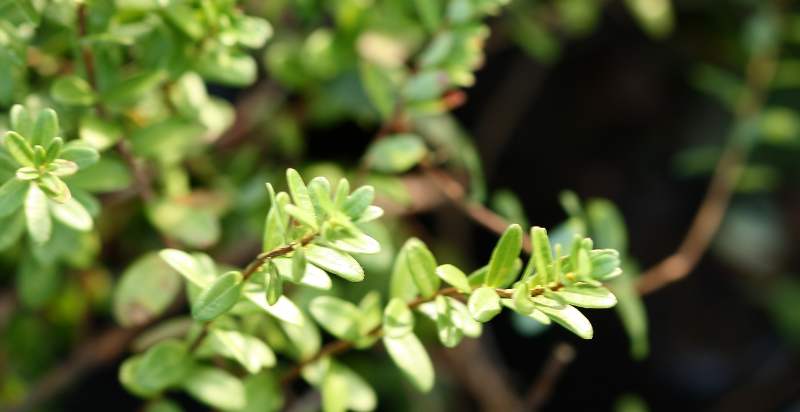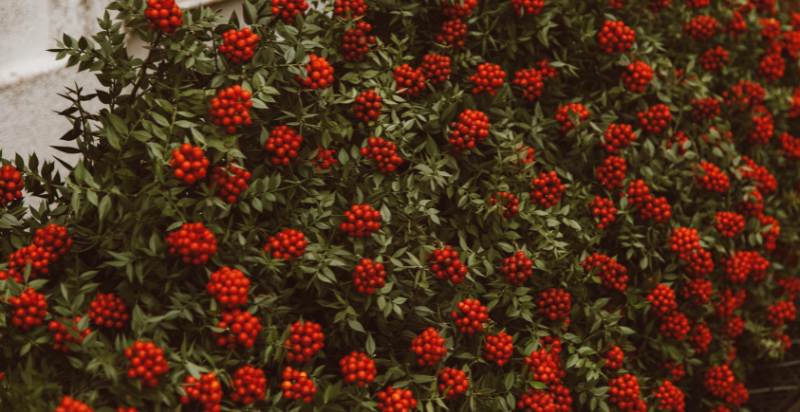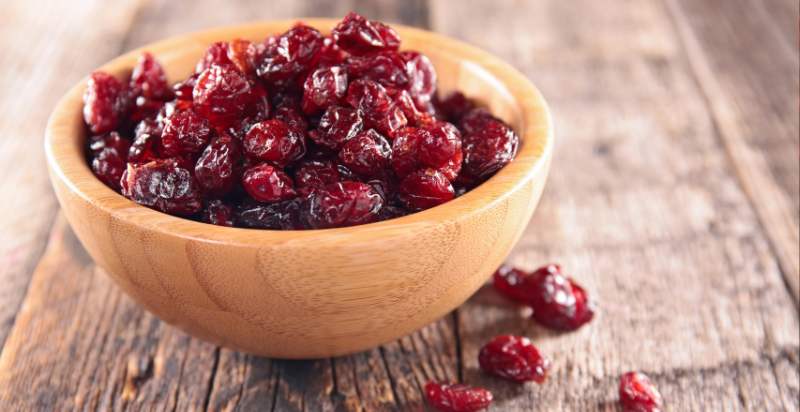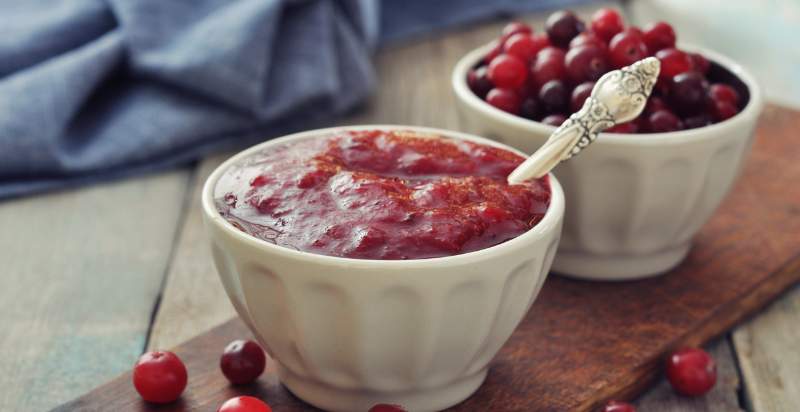Cranberries are a popular superfood with a wide range of health benefits. Filled with antioxidants and vitamins, these tart little berries can be enjoyed in many forms. Cranberries are often considered one of the most nutritious fruits available, from sipping cranberry juice to adding them as an ingredient in recipes. Here is everything you wanted to know about cranberries!
What are Cranberries?
Cranberries are small, tart fruits that is native to North America. They grow in boggy areas and thrive in cooler climates. Fresh cranberries have an intense taste but can be sweetened or blended with other ingredients to create a more pleasant flavor. Cranberry juice is a popular beverage made from berries, as are dried cranberries and sauces.
History and Origin of Cranberries:
Cranberries have been used for centuries by Native Americans, who valued them both as a food source and for their medicinal properties. Cranberry plants are found in wetlands across the northern hemisphere, but it is believed that North America is the ancestral home of cranberries. The Algonquian people called the cranberry “ibimi,” meaning bitter berry. In New England, settlers adopted this term and called them “crane berries.” This likely led to their current name, “cranberries.” In Massachusetts today, there are cranberry bogs where farmers cultivate different varieties of cranberries.
The first commercial cultivation of cranberries began in 1816 on Cape Cod, Massachusetts. As demand grew, production spread to other areas, including New Jersey and Wisconsin. By the late 1800s, cranberries were exported to England and other parts of Europe. In 1912, cranberry juice was first manufactured in Massachusetts. Cranberries became extremely popular during World War II when they were used to make a sauce for the troops overseas. This was when their popularity as a holiday side dish started to take off in North America.
Cranberries are grown all over North America and sold both fresh and processed into products like juices, jellies, sauces, preserves, dried fruit snacks, and more. They are also used in cosmetics and medical products because of their antibacterial properties. Cranberries remain a beloved seasonal tradition across many cultures around the world.
Cranberries are a versatile and healthy addition to any diet, offering many nutritional benefits. They are packed with vitamins, minerals, and antioxidants to help boost immunity and protect against illnesses like heart disease and cancer. Cranberries also contain dietary fiber, which is essential for digestive health. So the next time you need a side dish for your holiday dinner – reach for the cranberries!
Varieties of Cranberries:
There are three main varieties of cranberries: American, European, and North American. The American cranberry (Vaccinium macrocarpon) is the most common variety found in North America. It has a tart flavor and is grown in bogs on the east coast from Maine to New Jersey. The European cranberry (Vaccinium oxycoccos) is native to northern Europe and has a milder flavor than its American counterpart.
Finally, there are North American hybrid cranberries (Vaccinium x intermedia), a cross between the two other varieties. These hybrids have been developed to improve yield, size, color, and storage abilities.
Health Benefits of Cranberries:
Cranberries are a powerful superfood packed with health benefits. Rich in vitamins and minerals, cranberries boast antioxidant properties that can help improve heart health, reduce inflammation, promote healthy gut bacteria, and more. Cranberry juice is a popular choice for a morning beverage or an afternoon pick-me-up. Still, the whole fruit can also be enjoyed in many forms, such as dried or frozen cranberries blended into smoothies or sauces. The following are just some of the health benefits associated with eating cranberries:
- Cardiovascular Health: Studies have shown that cranberry juice can help lower LDL (bad) cholesterol levels and raise HDL (good) cholesterol levels while improving overall cardiovascular health.
- Anti-Inflammatory Properties: Cranberry juice has been shown to have anti-inflammatory properties that can help reduce the risk of chronic diseases like arthritis, heart disease, and cancer.
- Urinary Tract Health: The high levels of proanthocyanidins in cranberries are thought to be responsible for their ability to prevent infections in the urinary tract. Doctors often recommend cranberry juice to prevent or treat urinary tract infections (UTIs).
- Gut Health: Recent studies suggest that cranberry extract can improve gut health by promoting healthy bacteria growth and reducing inflammation in the digestive system.
- Brain Function: Studies show that regular consumption of cranberry juice may improve memory and cognitive function while reducing the risk of stroke and dementia.
- Skin Health: Cranberries have high antioxidants that can help protect the skin from free radical damage, reducing wrinkles and improving overall complexion.
- Immune System Boost: Studies suggest that cranberry juice may be beneficial for boosting the immune system, fighting off colds, and preventing infections.
Whether you’re looking to improve your heart health, reduce inflammation or get a delicious boost of vitamins and minerals, adding cranberries to your diet is an easy way to reap multiple health benefits.
Nutritional Value of Cranberries:
Cranberries are a nutritional powerhouse! They are an excellent source of vitamin C and manganese. They contain healthy levels of dietary fiber, copper, pantothenic acid, and vitamin E. Cranberries also contain compounds such as quercetin, anthocyanins, and proanthocyanidins, which have antioxidant and anti-inflammatory properties.
Studies have shown that these compounds may help reduce the risk of certain types of cancer, urinary tract infections, and cardiovascular disease. As cranberries are naturally low in sugar, they can be enjoyed as part of a balanced diet without worrying about added sugars or calories.
Additionally, their tart flavor makes them an ideal addition to sweet and savory dishes! Enjoy cranberries in salads, sauces, and smoothies, or eat them as a snack. Whatever way you choose to enjoy them, cranberries are sure to give your diet an extra nutritional boost!
Uses of Cranberries:
Cranberries have long been used for medicinal purposes. They contain beneficial antioxidants, which can help reduce inflammation and protect against chronic diseases such as heart disease, cancer, and diabetes. Cranberry juice is also believed to improve urinary tract health by preventing bacteria from sticking to the bladder’s walls. In addition to their medicinal benefits, cranberries are also known for their nutritional value—they’re high in vitamins C and K, manganese, copper, and dietary fiber—making them a great addition to any balanced diet. Cranberries can be used in baking, added to smoothies or yogurt parfaits, or eaten as a snack. They make a delicious topping for oatmeal or cereal – don’t forget to add a bit of sweetener!
Cranberries are also great for making jams and jellies. For those looking for an easy way to incorporate cranberries into their daily routine, there’s even the option of dried cranberries, which can be added to salads or trail mixes. Cranberries are sure to provide a nutritional boost in any way you choose to enjoy them.
How to Plant Cranberries?
Cranberries are an incredibly versatile and delicious fruit that can be used in various recipes. As well as being tasty, cranberries are also very nutritious, containing vitamins C, E, and K, as well as many other essential minerals and dietary fibers. Cultivating cranberry plants is relatively easy and can be done with minimal effort. This article will look at how to successfully plant and cultivate your cranberry plants in the comfort of your home or garden.
Planting Cranberries:
The best time to plant cranberry plants is in late spring or early summer when the soil temperature has warmed up sufficiently for them to grow. When selecting a spot for planting, it’s important to ensure that the site has good drainage and is not overly wet. Cranberry plant will struggle in standing water, and this could lead to root rot or other problems.
Once you’ve found a suitable area, the next step is to till the soil with a shovel or tiller, so it’s free of weeds and other debris. This will help provide an ideal environment for your cranberry plant to grow in. Once the soil is ready, you can begin planting your cranberry plant. If you are planting from seedlings, make sure they are planted at least 6 inches apart to have enough space to spread out and get plenty of air circulation. Planting too closely together can result in overcrowding which can lead to disease and mold problems.
Caring for Cranberry Plants:
Once your cranberry plant is in the ground, ensuring their continued health is relatively straightforward. Ensure that they receive a steady water supply throughout the growing season – approximately one inch per week should suffice. Mulching around them with straw or other organic materials can also help conserve moisture and reduce weeds from competing with your cranberries for resources. In addition, fertilizing every few weeks can help promote healthy growth.
When it comes time to harvest your cranberry plant, you’ll want to wait until the fruit has turned a deep red color – this usually happens anywhere from late summer to early fall. Once the cranberries reach full ripeness, you can use a pair of clippers or scissors to snip them off the vine and store them in an airtight container.
Planting and caring for cranberry plant is an incredibly rewarding experience that will provide you with delicious fruits for years to come. By following these simple steps outlined in this article, you’ll be well on your way to growing your supply of fresh cranberries at home.

How to Care For and Grow Cranberries?
Cranberries are incredibly easy to grow and care for. You can cultivate a healthy cranberry patch in your backyard or garden with a few simple tips.
First, purchasing the right type of cranberries is essential. Choose young cranberry plant with vigorous root systems to ensure successful growth. Plant them in moist soil rich in organic matter such as compost or peat moss. Establishing an irrigation system will also help keep your cranberry patch moisture levels regulated throughout the season.
It’s important to mulch around your cranberry plant to protect their shallow roots from extreme temperature changes and weed competition. Keep weeds away by hand weeding regularly or using an organic herbicide if necessary.
Pruning cranberry plant periodically promotes healthy, robust growth and enhances their overall fruit production. Prune in early spring by removing dead or diseased branches and thinning the existing growth. This will help increase airflow and allow more sunlight to reach your cranberry bush.
Fertilizing is another key part of maintaining a healthy cranberry crop. Use an organic fertilizer like compost or aged manure applied twice a year at the beginning of summer and autumn. As with all other fertilizers, follow the instructions carefully, as over fertilizing can damage your plants.
Finally, protecting your cranberries from disease is essential for successful cultivation; monitor them closely for any signs of infection. If you notice any suspicious-looking spots on the leaves or fruit, prune away the affected areas immediately and apply an appropriate fungicide according to the label directions.
Cranberries are a unique and rewarding crop to grow if done properly. These simple steps allow you to cultivate your healthy cranberry patch for years.

Preventions from Pests and Diseases Cranberries:
The most common diseases include leaf blight, fruit rot, root rot, and brown stem rot. The most common insect pests are cranberry girdlers and false chafers. Other pests may include sawfly larvae, thrips, and mites.
To prevent these issues from affecting the crop, it is important to practice good cultural practices such as maintaining soil fertility levels by using a balanced fertilizer blend containing nitrogen, phosphorus, potassium, and other micronutrients; removing diseased or damaged plants; rotating crops; providing adequate drainage to reduce moisture build-up in the soil; controlling weeds that can act as hosts for insects or disease organisms; avoiding over-irrigation or flooding of bogs; and promptly removing and disposing of overripe or diseased fruit. Additionally, insecticides, fungicides, and herbicides can be used to control certain pests and diseases. However, it is important to remember that these chemicals may negatively impact the environment, so they should only be used when necessary.
The best defense against insects and diseases is preventative measures such as sanitation and crop rotation. Sanitation includes removing plant debris from previous crops before planting a new one; this will help reduce the reservoir of disease-causing organisms that may remain in the soil during the off-season.
Crop rotation effectively breaks up pest-disease cycles by changing which type of crop is grown in a particular area each year, reducing the chance of insects and diseases building up in the soil. Additionally, using disease-resistant varieties of cranberry can help protect against certain diseases and pests. Finally, proper scouting of plants for insect damage or fungal infections should be done regularly to detect problems early before they become more serious.
By taking these preventative measures, growers can ensure that their crops remain healthy with minimal intervention from chemical pesticides and fungicides. This will save money and help protect the environment from the potential negative impacts of the overuse of pesticides.
How to Store Homegrown Cranberries?
Homegrown cranberries can be stored for up to one year, depending on their quality when harvested. Before storing them, inspect the cranberries and discard any soft or moldy fruit; these will not store well.
If possible, wrap the cranberries in clean paper towels and store them in a single layer in shallow trays or containers. Place the berries in the refrigerator for immediate use or freeze them for later use. Be sure to label and date any frozen berries you plan to keep for more than a few months.
When it’s time to use your frozen cranberries, allow them to thaw at room temperature before using them. Once they are thawed, they should be used within three days; if not, they should be discarded.
Cranberries can also be dried or canned for later use. When drying cranberries, spread them in a single layer on a paper towel-lined tray and dry at the lowest possible temperature in an oven with the door cracked open. Canned cranberries are best canned within 24 hours of harvest; when canned properly, they will last up to one year.
Proper storage techniques allow you to enjoy your homegrown cranberries all year.

How to Use Cranberries in your day-to-day Life?
Cranberries are a highly versatile fruit that can be used in numerous ways. Here are some ideas for incorporating cranberries into your daily life:
- Make a smoothie: Start your day with a healthy cranberry smoothie! Combine fresh or frozen cranberries, yogurt, honey, or another sweetener to create an energizing snack or breakfast item.
- Add it to cereal: Enhance the flavor of any breakfast cereal with a handful of dried cranberries. Not only will you get more antioxidants, but your bowl of cereal will also become much tastier!
- Sprinkle on salads: Need an extra burst of flavor? Top salad greens with dried cranberries for sweetness and crunch.
- Bake with it: Incorporate cranberries into muffins, cakes, or other baked goods for added flavor and texture.
- Create a sauce: Simmer fresh cranberries on the stove until soft, then blend them with some honey to make a delicious homemade sauce! This is perfect for drizzling over ice cream, pancakes, or waffles.
- Make the jam: Use cranberries as your homemade star ingredient! Boil together water, sugar, and fresh cranberries until thickened and spread it onto toast or use it as a condiment on burgers and sandwiches.
- Add it to oatmeal: Elevate oatmeal by adding some fresh or dried cranberries. The sweet and tart flavor adds a unique twist to the classic breakfast dish.
- Snack on them: Dried cranberries make for a great snack! Keep some at your desk for a mid-day pick, or add to trail mix for extra fruity sweetness.
- Infuse it into the water: Create your own tasty (and healthy!) flavored water by infusing fresh cranberries into plain, filtered water overnight. You’ll be left with a refreshing beverage full of antioxidants, vitamin C, and other beneficial nutrients.
- Make a compote: Simmer fresh, diced cranberries in orange juice until softened, then sprinkle with sugar or honey for a delicious compote that can be spooned over ice cream, pancakes, or waffles.
These are just some fun and creative ideas for using cranberries in your day-to-day life. With their numerous health benefits and sweet-tart flavor, it’s easy to see why this powerful berry should be a regular staple at home.

Potential Risks from Cranberries:
Although cranberries are generally safe to consume, there are certain potential risks associated with eating them. Some people may experience allergies or sensitivities when eating cranberries, and it’s important to be aware of these risks to prevent any adverse reactions.
It’s also important to note that consuming large amounts of cranberry juice can cause gastrointestinal upset and diarrhea due to the high acidity levels. Also, drinking too much cranberry juice can interfere with drug absorption, so if you take medication regularly, it’s best to speak with your healthcare provider before making changes to your diet.
Finally, those with kidney stones should limit their intake of cranberry products, as some studies suggest that it could cause an increase in oxalate stones.
By understanding the potential risks of consuming cranberries, you can make informed decisions about safely incorporating them into your diet. Consulting with a healthcare provider is recommended before making any major dietary changes.
Conclusion:
Cranberries are a powerful berry with numerous health benefits, but it’s important to be aware of the potential risks associated with consuming them. By understanding these possible risks, you can make better choices about safely incorporating cranberries into your diet. With their sweet and tart flavor and numerous uses in recipes and beverages, cranberries can be an enjoyable addition to your daily routine.
Thanks for reading! This information helps you enjoy the many wonderful benefits of cranberries safely and healthily. Happy snacking!
- Water Berries: Description, Flavor, Benefits, And Uses - June 18, 2024
- Everything You Wanted To Know About Sweetheart Cherries - June 17, 2024
- Indian Jujube: Description, Flavor, Benefits, And Uses - April 30, 2024

7 thoughts on “What are Cranberries? How to Plant, Grow, and Harvest Cranberries”
Comments are closed.